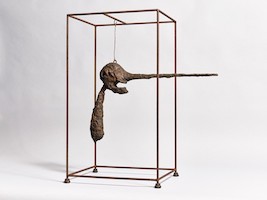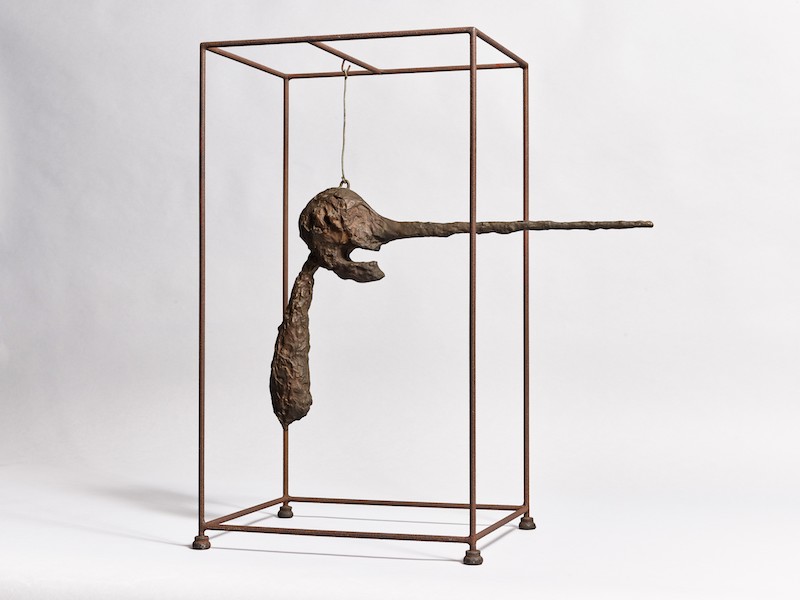
PARIS – Institut Giacometti will mount an exhibition dedicated to the artist’s iconic work, The Nose. Continuing its exploration of the work of Alberto Giacometti, Institut Giacometti will bring together all versions of The Nose, a sculpture that was revisited by the artist during several years. One version of The Nose that is too fragile to be moved will be presented via a virtual production. The show opens on October 7 and will remain on view through January 7, 2024.
Accompanying these exceptional works are sculptures, drawings and archives that highlight the many facets and interpretations of one of Alberto Giacometti’s most enigmatic works. Through the presentation of seminal works by four contemporary artists – Annette Messager, Rui Chafes, Hiroshi Sugimoto and Ange Leccia – Institut Giacometti reveals the sculptor’s creation in a new light.
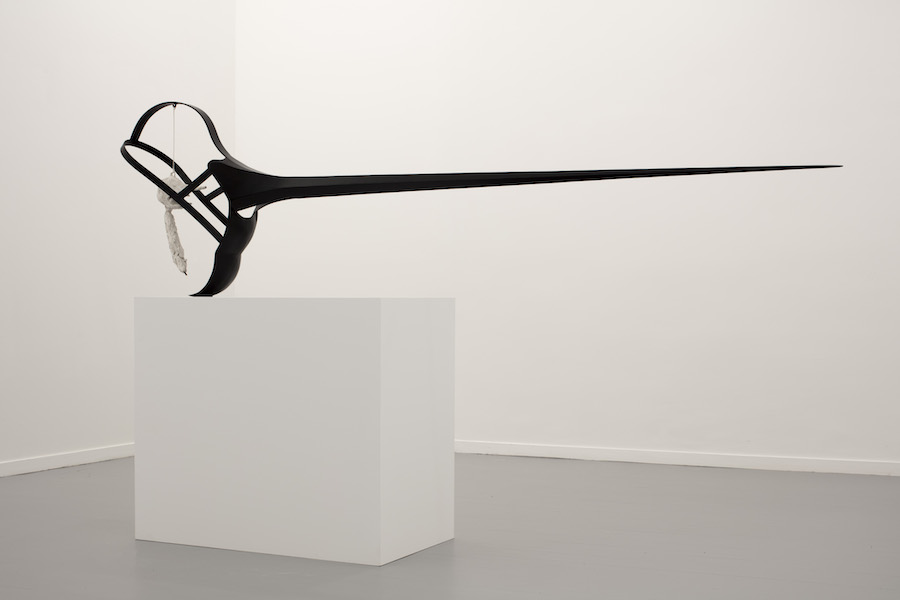
The Nose (1947-49-1964) has been produced in several different versions. It is both a grotesque figure recalling the popular character Pinocchio, and a vision of death – a recurring theme that, in the work of Giacometti, takes on distorted and often paradoxical forms. The exhibition highlights the multiple cultural roots of these sculptures, which recall the Vanitas and anamorphoses of art history, as well as the carnival-like figures of popular culture and also traditional African and Oceanian objects – particularly masks from New Guinea.
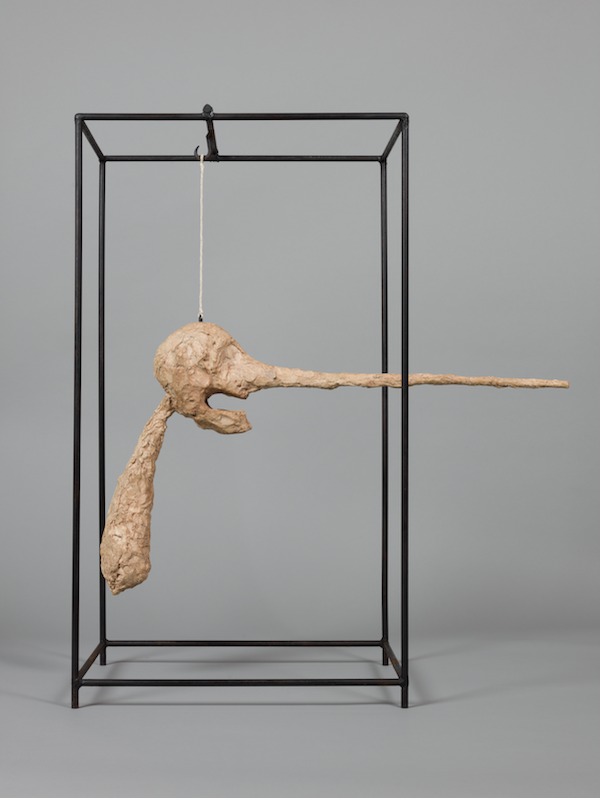
A wide selection of sculpted portraits also show Giacometti’s specific relationship with anatomy: on many occasions, he focused on the nose of his model. A selection of previously unseen drawings will illustrate the place of caricature in his imagination and will be displayed in public for the first time. Similarly, the reappearance of Surrealist fantasy and humor – in a period dominated by the quest for reality and the obsession with an unattainable resemblance to the original model – sheds new light on Giacometti’s artistic approach in the immediate postwar years, revealing the variety of registers that he plays on.
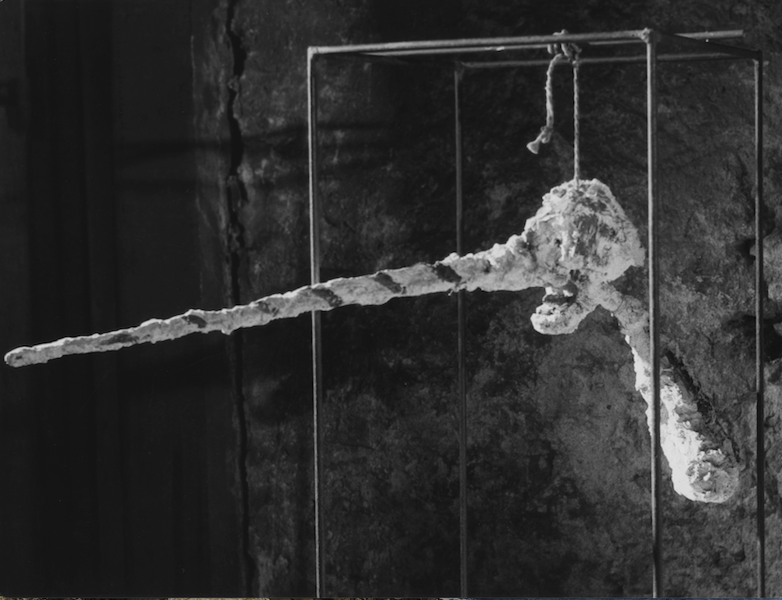
For the first time, five versions of The Nose will be shown together in an exhibition, including three different models in plaster from the collections of the Fondation Giacometti and the Centre Pompidou (1947-49-64); two bronzes (1964), including a loan from the Justin Sun collection; and all the drawings and archives related to this iconic sculpture.
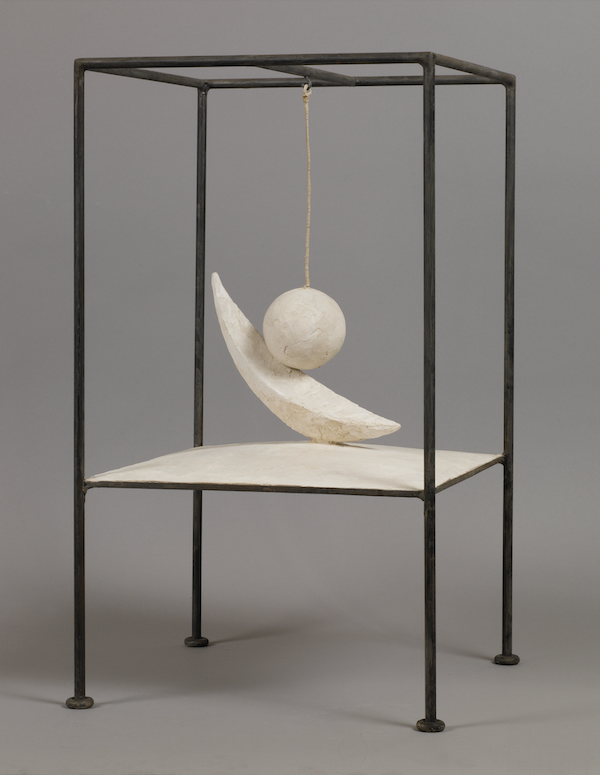
It also includes works that introduce the artist’s thoughts on death: the renowned Point to the Eye (1932), Head-Skull (1934) and Head on a Road (1947). In addition, a selection of busts, especially of the artist’s brother Diego Giacometti (1955-56), show the very particular contrast between the frontal and lateral views in Giacometti’s sculptures, of which The Nose is a perfect expression. (“If I look at you face-to-face, I forget your profile. If I look at your profile, I forget the face. Everything becomes discontinuous,” Giacometti said in 1962.) Finally, the reference to non-Western art is highlighted through an exceptional loan from the Musee du Quai Branly.
The exhibition is organized in partnership with APENFT Foundation and TRON.
Visit the website of Fondation Giacometti and see its dedicated page for Alberto Giacometti: The Nose.


